Make your patchy and dull lawn lush, green, and thick with our effective and easy-to-make Homemade Lawn Fertilizers!
If you want your yard to stand out with lush green and dense carpet of grass and plants, use these Homemade Lawn Fertilizers.
Learn How To Make Bone Meal Fertilizer At Home here
Homemade Lawn Fertilizers
1. Epsom Salt
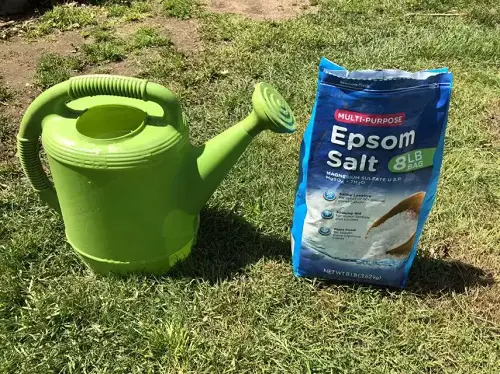
Epsom salt contains two elements that boost lawn grass and its lushness-Magnesium and Sulfur. Magnesium is crucial for activating chlorophyll production and helping in the absorption of phosphorus and nitrogen, while sulfur helps plants to photosynthesize.
Sprinkle five cups of Epsom salt per 100 meters square of lawn, apply it with a spreader or spray it by diluting it in water to get a lush green lawn. If you’re diluting, follow the product’s instructions. It is one of the best Homemade Lawn Fertilizers.
Check out some Fantastic Epsom Salt Uses in the Garden here
Recipes with Epsom Salt
Epsom Salt & Ammonia
- Mix one cup each of Epsom salt and ammonia in a bottle. Add two-three tablespoons of this mixture in a watering can and spread it over 200 square feet of grass.
- Alternatively, you can mix it with equal parts water to make a liquid fertilizer for covering your entire lawn.
Supplemental Lawn Tonic
- Mix 3 pounds of Epsom salts with an entire batch of dry lawn food (20-5-10). Spread half of this mixture on the turf.
2. Ammonia
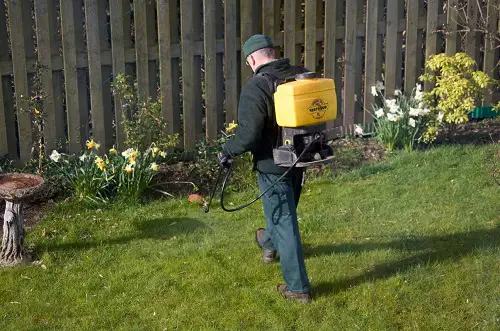
All cleaning supplies contain ammonia in the hydroxide form. Ammonium hydroxide enriches the nitrogen and hydrogen content of the soil, thus helping the grass to utilize the soil nutrients effectively and grow greener and thicker as a result.
Spray two ounces of homemade ammonia fertilizer for every 1000 square feet of your lawn. Take note of the dosage labeled on the sprayer and walk at the right speed to ensure effective application throughout the lawn. Avoid using bleach with ammonia.
Want to Make Organic Fertilizers from Kitchen Scraps? Click here
Recipes with Ammonia
- Take a cup of ammonia in a one-gallon container. Dilute it with water, and apply. Or, fortify it with additional ingredients for a more effective combination.
- You can add anything from a can of beer to half a cup of liquid dishwashing soap. This will help the fertilizer to stick to the grass for a longer time.
3. Club Soda
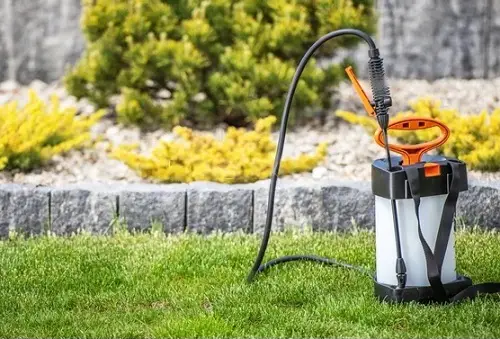
Carbonated water is full of basic elements that make up the cellular framework of plants, such as carbon, oxygen, and hydrogen. It also contains sodium in its usable form, which is the key activator of vital metabolic processes.
Low-calorie diet soda cannot provide the same advantage and can be detrimental in high doses. As a result, it’s best to avoid this.
Wondering if Earthworms Improve the Soil? Click here
Recipe with Club Soda
- In a bottle, mix one can of club soda, one can of beer (12 oz), and half a cup each of ammonia, mouthwash, and liquid dishwashing soap. Spray it using a hose sprayer once every three weeks. Read the recipe in detail here.
Tip: Coke and sprite contain excess amounts of sugar that tend to attract unwanted pests and upset the NPK ratio of the soil.
4. Baby Shampoo

Just like soap, baby shampoo helps your regular lawn fertilizer to stick to the grass blades, helping it penetrate into the soil.
Make sure you don’t use anti-bacterial shampoo, or else it will kill all the beneficial soil bacteria you have been counting on. Baby shampoo, in moderate quantities, also works as a weed killer.
Here are the Best Fertilizers for Lucky Bamboo Plants
Recipe with Baby Shampoo
Mix together a can of beer, soda, and one cup of baby shampoo with 5-6 gallons of water. Apply the mixture evenly throughout the lawn once or twice a month.
5. Mouthwash
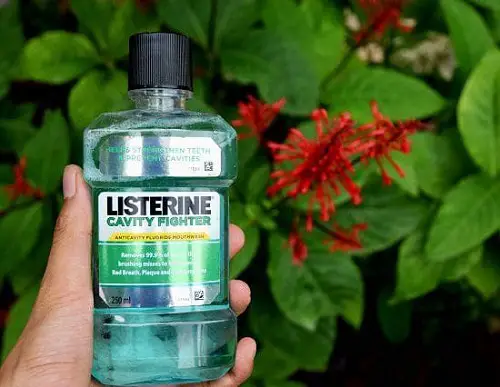
Mouthwash is a must-have for any recipe that calls for pesticide power. Its fungicidal properties repel pests and insects and keep lawn grass lush and healthy throughout the year.
Add 50ml of mouthwash in 5-6 gallons of water and sprinkle the lawn with this solution once in 2 months.
Here are Super Useful Homemade Fertilizers for Indoor Plants in Water
6. Molasses
Molasses, just like beer and soda, contain high amounts of sugar, which feed soil microbes and boosts plant health. It also contains iron in usable form, which takes care of photosynthesis and cellular metabolism.
Check out our article on 14 Powerful DIY Cucumber Fertilizers here
Recipe with Molasses
Mix Epsom salt and molasses in a 1:2 ratio. Let the components dissolve and then dilute them in 5 gallons of water. Spray this solution on the lawn and repeat in 2-3 months.
7. Compost Tea
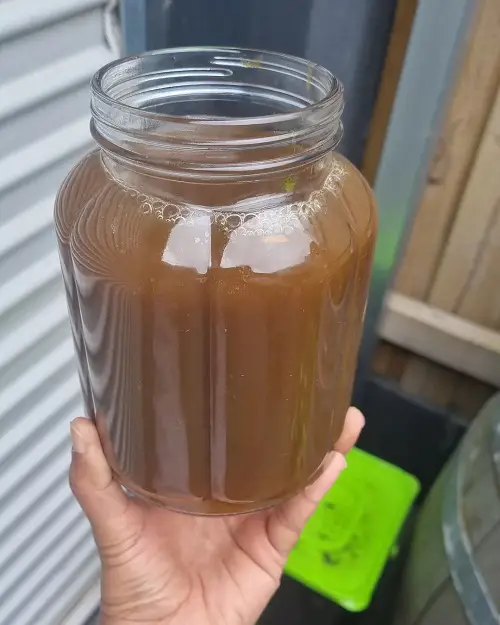
This tea is a liquid extract of compost loaded with beneficial organisms and little quantity of soluble nutrients. According to Jersey Agricultural Experiment Station, the application of compost tea to lawns spreads beneficial microbes into soil and plants.
It is one of the best Homemade Lawn Fertilizers.
Find out the Best Fruit Peels that are Brilliant Fertilizers here
Recipes with Compost Tea
- Take a clean 5-gallon bucket and fill it with 4 gallons of chlorine-free water. You can use a well or rainwater too.
- Add one cup of compost per gallon of water in a fine mesh bag or pantyhose. Tie the bag, put it in a bucket, and squeeze it to infiltrate the water.
- Brew the compost tea for 24-36 hours, and stir and rearrange the bubbler a couple of times every day.
- During the hours of completing the brew, apply the tea with a pump sprayer, and reapply the fertilizer every two to four weeks in the early morning during the growing season.
8. Coffee Grounds
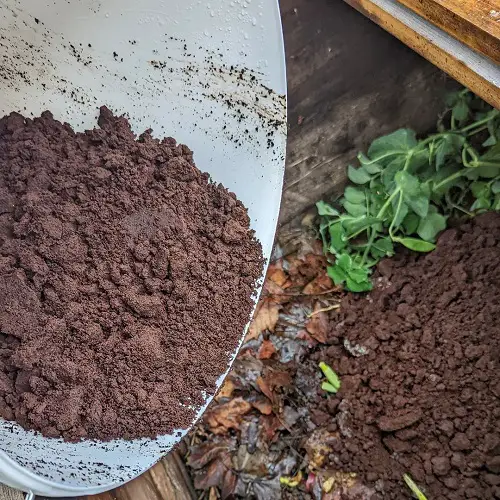
Coffee grounds are rich in carbon, nitrogen, and other compounds that nourish microorganisms in the soil. They also contain compounds that restrain disease-causing microbes. You can use it as a healthy soil amendment for vegetable plants.
Learn How to Make Grass Tea Fertilizer here
Mix half a pound of coffee grounds with 5 gallons of water and spray your lawn with it. Sprinkle the coffee grounds on the lawn and rake into the soil. It is one of the best Homemade Lawn Fertilizers.
9. Dish Soap
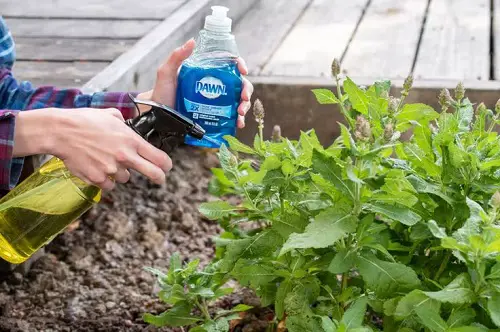
Also known as dishwashing detergent, it not only clears out grease from your dinner plates but is also used in homemade fertilizer. It helps the soil by soaking the fertilizer in the roots and kills the pests in the lawn.
Dish soap is an optional ingredient in many homemade solutions, a lawn fertilizer recipe with Epsom salt or household ammonia also has a few drops of dish soap.
Add 100 ml of dish soap in 8-10 gallons of water and sprinkle the lawn with it. Do it once in 8-12 weeks.
Learn Which Plants Like and Do Not Like Coffee Grounds here
How Important is Lawn Food?
A lawn that is lush and healthy from the start won’t require great attention in the form of lawn food or liquid feed to cope with the rigors of seasonal threats.
Lawn foods are essential supplemental soil therapies, often given as a quick fix to provide nutrients for recovery after unfavorable weather conditions or quick elimination of certain pests from your lawn.
Find out some Excellent Eggshell Uses in the Garden here
How to Use Lawn Foods for Maximum Benefits?
Applying homemade fertilizers during the beginning of spring provides fertile ground for grass to grow. A fall application is a potent stimulant to aid growth and recovery following a particularly hot and stressful summer season. It also enriches the soil and prepares it for the upcoming harsh winters.
The monthly application helps the ground to absorb water and liquid feed better and nurtures a healthy interaction with soil microbes.
Find out some helpful uses of wood ash in the soil here
Some Quick Tips to Remember
- Apply evenly and lightly throughout your lawn. If you’re unsure about the results, dilute it with water and test it on a smaller area.
- Water your lawn once before applying lawn food and then again after application. This will enable faster and deeper penetration.
- Aerate your lawn before fertilizing to create a surface that will be maximally receptive to lawn food.
Want to make banana peel fertilizer at home? Click here


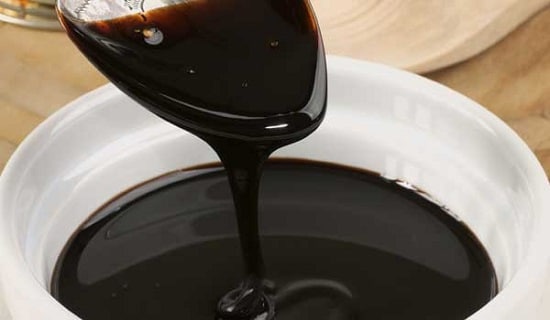
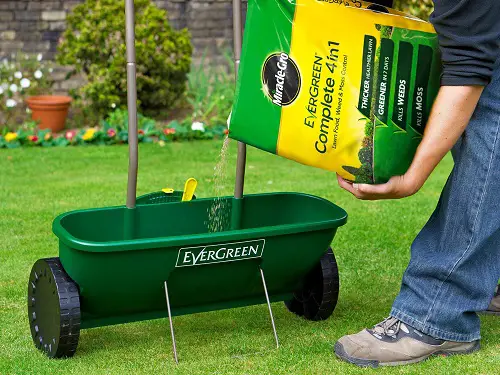


Best home made liquid feed for my vegetables patch for cabbages ,root family swedes ,turnips ,potatoes ,runner beans ,carrots ,parsnips ,rhubarb can you help ,will pass it to our allotment center